2013 – Spain and Portugal
Date of tour: October–November 2013 (6 weeks: one week to get there from Germany, one week to get back, four weeks on the Iberian Peninsula)
Distance travelled: 8000km
Total cost of tour for two people and two motorbikes: approx. €5000
Map showing points of interest
(Click on the photos on the right to enlarge them.)
Getting there and around
We started this tour in Germany, heading south through the Alps until we reached Genoa. We then followed the Mediterranean coast westwards along the Cote D’Azur and southwards into Spain. Photo 1 was taken on the Ligurian coast in Italy and Photo 2 is in Monte Carlo. This stretch was 1800km long and took us six days. The coastal route along the Ligurian Sea and the Cote D’Azur is very built-up and our daily average speed was only 30km/h. The motorways are, of course, a much faster, if less interesting, alternative.
Spanish motorways which are labelled AP (Autopista) are toll roads. Motorways labelled A (Autovia) are not. On some stretches of toll roads there is a fixed charge which you pay on the motorway; on others you have to take a ticket on entering the motorway and pay at the toll station on exit. An easy way to pay is by credit card. This website contains information on toll charges in Spain.
All Portuguese motorways are toll roads and they operate one of two systems: 1) you take a ticket on entering and pay by cash or credit card as you leave or 2) you swipe your credit card on entering, your licence number is read on entry and again on exit and the toll amount is calculated and charged to your card. On both Spanish and Portuguese motorways, motorbikes have to pay the same toll as a car.
Speed limits of up to 120-130 km/h are permitted on motorways. On other main roads 80-100 km/h is allowed and in built-up areas the limit is 50-70 km/h.
In Portugal, some of the roads are in a poor state of repair, with bumps and potholes a common hazard.
The price of Octane 95 petrol in Spain and Portugal was around €1.50 per litre in 2013. Octane 98 cost around €1.70.
Note: It helps to know a bit of Spanish (or to have a dictionary/translator with you), especially in the more rural areas of Spain where some tourist information and restaurant menus are often not available in English. We had less trouble communicating in English in Portugal, even in the rural areas.
To return to Germany at the end of the tour we crossed France from the Atlantic Pyrenees in the southwest in the direction of Freiburg. Unfortunately, snow arrived in France just as we were crossing. As a result of the weather conditions, we only managed to cover 300km per day, so the 2000km trip from the Spanish border back to Germany took us one week.
Below is the route we followed within Spain and Portugal. Since it can get cold in the interior in autumn, we never ventured too far from the coast:
Spain
1. We entered Spain on the D914 coastal mountain road southeast of Perpignan. This scenic motorbiking route winds up and down hills and goes through the small harbour towns of Banyuls-sur-Mer, Cerbere and Portbou and is a great way to enter the country (Photo 3). Our first night in Spain was spent in Roses (see Accommodation below).
2. From Roses we took the motorway to Barcelona, where we stayed with friends for three nights and explored the city (Photo 4).
3. The coastal area around Barcelona is very built-up so we decided to head to some of the mountain roads inland. We left the city via AP-7 and then took AP-2 as far as Exit 8, paying €12 per motorbike for the privilege. From Exit 8 (L’Espluga de Francolí) we followed the LP7013 over the mountainous Serra del Montsant (Photo 5). Continuing southwestwards, we took the scenic N420 and joined the N232 which led us to Morella (see Worth a visit and Accommodation below).
4. TOP TIP There are some excellent motorbiking roads in the mountainous area known as El Maestrazgo to the southwest of Morella. The picturesque route we followed was along the CV125 (Photo 6), the A1701 past the village of Linares nestled into the mountainside (Photo 7), the A1514 through the Sierra de Javalambre (Photo 8), the CV35 and the CV390. We camped that night at Mariola Camping near Alcoy (see Accommodation below).
5. TOP TIP To the east of Alcoy is a 160km circular mountain route along the CV700, the CV715 and the CV70, which takes in El Castell de Guadalest and lots of small rural villages. The roads are steep and curvy with expansive views over mountainous scenery and, on stretches of the CV715, the Mediterranean Sea (Photos 9–11).
6. From the Costa Blanca we headed towards the Sierra Nevada, cutting through the Sierra de los Filabres on the A1178, with a pass at 1970m altitude, on the way. Shortly after getting onto the A1178 from Serón, a smaller side road used by cyclists leads even higher over the mountains. It appears that motorcyclists are allowed to use this narrow road but not other motor vehicles. That night we stayed in Tabernas, site of “Mini Hollywood”, where Sergio Leone’s famous spaghetti westerns were filmed.
7. TOP TIP The Sierra Nevada is a popular area for motorcycling and with good reason. There are two main east-west roads through this mountain range: the A348, which follows the river valley and the narrower roads A4130 and A4132, which run parallel but at a higher altitude, winding in and out of valleys and giving expansive views across the mountain tops (Photos 12–13). There are a couple of petrol stations along the higher route (these are between the main villages, rather than in them). However, as impressive as the Sierra Nevada is, for some really outstanding scenery and biking routes, the Sierra de Almijara to the west is hard to beat. In particular, the stretch of the A4050 north of Otívar is not to be missed (Photo 14).
8. TOP TIP The roads to the south and west of Ronda (see Worth a visit below) are good motorcycling routes. The best stretches are the A405 between Jimena de la Frontera and Ronda (Photo 15) and the A374/A372 between Ronda and El Bosque (Photo 16).
9. After working our way up through Portugal (see Portugal below), we re-entered Spain in the northwest (Galicia), our first stop being Santiago de Compostela, which is famous as a pilgrimage destination (see Worth a visit below). From there, we headed up to the Cantabrian coast and followed it eastwards, choosing to overnight at the smaller towns of Cudillera and Santillana del Mar (see Accommodation and Worth a visit below) rather than in large cities such as Santander or Bilbao.
10. TOP TIP On our way eastwards along the Cantabrian coast we took a diversion into the Picos de Europa, a limestone mountain range whose highest peak is 2658m and highest pass 1609m. We entered the Picos on the A625 and did a circular route via the A621. The scenery is breathtaking in the whole area (Photo 17) but there is an especially nice place to take a break by the artificial lake at Riaño (Photo 18).
Portugal
Note: the roads in the Algarve are not particularly exciting for motorcycling. The best motorcycling routes in Portugal are in the north of the country.
1. We crossed the Portuguese border via the A22 from Andalucía and headed towards Faro. From there, we took the scenic N2 northwards and N124 westwards, passing through the Serra de Monchique and the picturesque town of Silves with its castle on the hill. Some roads in the Serra de Monchique give distant views of the Atlantic, but the coastal roads to the west of these heights are fairly nondescript. We stayed the night at the small beach resort of Vila Nova de Milfontes.
2. Portuguese motorbiking roads start getting more interesting north of Setúbal, which can be reached by ferry from Tróia. The vehicle ferry sails every hour and the price for a motorbike is €8. West of Setúbal is the Serra da Arrábida – the mountain road is signposted Arrábida. From this higher road there are expansive views of the Tróia peninsula between the Atlantic and the mouth of the River Sado to the south and, to the north, views of the River Tejo and Lisbon. Leaving this peninsula involves crossing the magnificent bridge over the River Tejo. One other good motorbiking route near Lisbon is the Serra de Sintra – avoid weekends, though, as it gets absolutely packed with motorbikers, cyclists and motorists.
3. TOP TIP The best motorbiking roads in Portugal are in the northern half of the country in the area to the south and east of Porto; as far down as Tomar to the south and Covilha to the southeast. Here you’ll find, among others, the mountain ranges of the Serra da Lousa near Coimbra and the Serra da Estrela, which contains Portugal’s highest mountain, the Torre, at 1993m. Unfortunately, we only managed to do some of the roads in this area due to poor weather conditions in November. As a result, our motorbiking tour at this stage turned into a wet city tour and we ended up instead spending time in the towns of Óbidos, Tomar, Coimbra and Porto (see Worth a visit below).
Accommodation
We took our tent with us on this tour, intending to camp as often as we do when we travel in northern European countries, but if we were to tour this region again, we would stay in the excellent value guesthouses and save ourselves the trouble of bringing camping gear. This is especially the case when travelling in low season (as we were), when many campsites are closed, guesthouses reduce their room rates and the weather in the northwest of the peninsula can be unpredictable. In addition, the campsites are often some distance from towns and cities, so whenever we wanted to visit a city, we stayed in a guesthouse anyway. Of the 42 days of this tour, we ended up camping only 10 times.
However, should you wish to camp, there are ample campsites in Spain and Portugal and these are marked on a good road map (we bought a Michelin map for each country). Many campsites in the north and east of Spain do not have grassy areas for pitching tents, so it’s advisable to bring a hammer for getting the tent pegs into the hard ground. The cost of one night’s camping for 2 people, 2 bikes and a tent ranged from €12–€22.
Hostales (as opposed to youth hostels, which are known as albergues juveniles in Spain and pousadas da juventude in Portugal) offer good value accommodation. Another alternative is to stay at out-of-town guesthouses; in Spain these are usually converted farm buildings known as casas rurales and in Portugal they tend to be converted manor houses, monasteries or castles known as casas (Photo 19), pousadas or castelos (Photo 20).
This is the accommodation we stayed at in Spain and Portugal:
Joncar Mar campsite in Roses is a hard-ground site with a swimming pool and restaurant and is located within walking distance from the beach (Photo 21).
Hotel Rey Don Jaime in Morella is situated in the centre of this pretty little town. Secure underground parking a short walk from the hotel is provided for €10 (bikes can share a parking space). The rooms are clean, comfortable and spacious, the staff are friendly and helpful and the breakfast is large and varied. A double room costs €64.
Mariola Camping is a large campsite in a very peaceful location 9km from Bocairent on the mountain road to Alcoy (Photo 22).
Hostal el Puente in Tabernas is an excellent value two-star guesthouse with large, clean rooms, a secure garage for motorbikes and a very friendly proprietor. A double room without breakfast in low season costs €40 and there is a restaurant and bar on the premises.
Camping Rio Jara, the southernmost campsite in mainland Europe, is a good quality campsite located in a Natural Park next to the beach approximately 5km north of Tarifa. The tent pitches are soft and grassy (as opposed to the hard ground we’d encountered in other Spanish campsites) and protected from the sun and the Atlantic winds by high hedges (Photo 23). The walk along the wide and sandy beach packed with kite-surfers to the town centre takes around one hour and there is a nice beach bar to stop for a drink at the end.
Cortijo Mesa de la Plata is a casa rural (converted farmhouse with swimming pool) located approx. 4km from Arcos de la Frontera but with good views of the old town from the gardens (Photo 24). We stayed here because the campsite in Arcos was undergoing renovation and, after trying to negotiate the narrow and winding streets of the old town with fully laden bikes and a satnav that kept sending us the wrong way, we decided to opt for somewhere outside the town centre. Cortijo Mesa de la Plata provides ideal accommodation for motorbikers as it is enclosed behind a wall and secured with a locked gate at night. For a 3-star guesthouse, the rooms are of high quality. In low season, a double room with breakfast costs €66.
There are a couple of campsites right next to each other in Vila Nova de Milfontes. We stayed at Campiferias. The campsite looks cool and shady due to the pine trees but unfortunately their long trunks didn’t really offer that much shade from the burning sun (Photo 25).
Casa d’Óbidos is a nicely-renovated 19th century manor house, complete with antique furnishings, which has been converted into a guesthouse. It is located 20 minutes’ walk from the small and pretty town of Óbidos, has secure parking and in low season, a double room or cottage with a plentiful breakfast costs €79 (Photos 19 and 26).
There is a hotel in Tomar located on an island in the middle of the river, accessible by bridge from the Avenida Marquês de Tomar. The hotel is the only building on the island so motorbikes are safe and secure. A double room with breakfast in low season is €70.
Hotel Oslo is a very centrally-located hotel in Coimbra which provides secure parking in a nearby underground car park. From the bar on the fifth floor you get superb views of the old town. A double room with cooked breakfast costs €60 in low season.
One of the most interesting accommodation options we stayed in on this tour has to be Castelo Santa Catarina in Porto. Not far from the centre of the city, this converted stately home has elaborate decoration on its walls and ceilings, period furniture in the rooms and traditional Portuguese blue tile cladding on the outside of the building, as well as peaceful palm-tree filled gardens. The hotel is exceptional value, at €45 for a double room or €60 for a suite (you get a discount if you pay cash), and there is secure parking for motorbikes (Photos 20 and 27).
Miradoiro de Belvis is a 2-star hotel in Santiago de Compostela with secure parking for motorbikes and nice views of the nearby monastery. The hotel uses the same entrance as the car park (Photo 28). A double room in low season is €55.
Hotel Rural Aguilar (Photo 29) is located 2km from Cudillero, a pretty harbour town which seems to close down out of season. A double room at the casa rural costs €45 in low season plus €5 per person for a simple breakfast.
Hotel Colegiata is on a hill overlooking the pretty medieval village of Santillana del Mar and only 5 minutes’ walk from the town centre.
Worth a visit
If, like us, you prefer to avoid large cities while touring on a motorbike, the following places are alternative recommendations:
Morella is a small and very pretty ancient fortress town around 200km north of Valencia, built on a rock almost 1000m above sea level. It has narrow, steep streets and it caters very well to tourists (Photos 30 and 31). For dining in Morella, Daluan is an excellent choice.
From Tarifa (the southernmost point of mainland Europe), there are clear views over the 14km-wide Gibraltar Straits to Africa. Tarifa is a laid-back place whose unspoilt beaches, popular with kite-surfers because of the strong Atlantic winds along its coast, are thankfully free of the ugly condominiums and hordes of tourists that plague most other Spanish beach resorts (Photo 32).
Gibraltar is a very odd place – a piece of Britain stuck onto the bottom of Spain. Walking down Gibraltar’s Main Street, you could be forgiven for thinking you were on any high street in any UK town; from the shops to the pubs to the lampposts, pillar boxes and flower pots, everything is the same as in the UK. You will even hear British regional accents all around you. The major difference is, of course, the climate. Plus the fact that there’s a very large rock, reachable by cable car, where you can enjoy spectacular 360° views of the Mediterranean, the mountains and across to Africa, as well as be entertained by the 200 or so Barbary macaques that live on the top of Gibraltar Rock (Photos 33 and 34).
Andalucía is well-known for its pueblos blancos (little towns of white washed houses nestling into the mountainside, often perched precariously on the top of a rock). While travelling through the Sierras of Andalucía you will encounter these small villages all around (Photo 15), but two in particular are worth stopping off at: Ronda (Photo 35) and Arcos de la Frontera (Photo 24).
Óbidos is a small Portuguese walled city on a hill located approx. 80km north of Lisbon with narrow, cobbled streets and some interesting architecture (Photo 36).
The town of Tomar, located approx. 140km north of Lisbon, played an important role in the history of the Knights Templar, being founded as their headquarters in the 12th century. The monastery in Tomar, the Convento do Cristo, is well worth a visit (Photo 37).
Coimbra, once the medieval capital of Portugal, is home to the country’s oldest and most prestigious university and has a large student population. The impressive-looking university buildings are a popular tourist attraction themselves and are located on the top of the hill in the old town, an area which is so compact that the streets are almost vertical (Photo 38).
Portugal’s second largest city, Porto, is well worth a visit. Located on the banks of the River Douro, the steep streets are lined with colourful houses and topped by baroque churches. On the opposite bank are the many port wine distilleries offering tours and tasting and the traditional flat-bottomed boats, once used for transporting the wine, are tied up outside (Photo 39).
WARNING: Santiago de Compostela is very touristy. Almost every shop sells souvenirs and restaurant prices are much higher than elsewhere. Even in November, the streets were full of pilgrims walking the Way of St James. Nevertheless, it’s worth visiting the town to view the magnificent architecture (Photo 40).
Cudillero is a pretty little hillside harbour town on the Asturian coast which is very quiet out of season (Photo 41). Fortunately we found one restaurant that was open in November and where we could sample fabada, Asturian bean stew.
Despite its name, Santillana del Mar is not on the coast – it is a quaint medieval town with cobbled streets nestled in a valley approximately 30km west of Santander (Photo 42).
Food and drink
Spanish and Portuguese cuisines are delicious, and the low prices make eating out a very affordable option. We ate in restaurants on this tour a lot more than we did when touring in the northern European countries.
For example, the popular Menu of the Day (Menu del dia in Spanish) for €12-15, consisting of three courses and often including wine, beer, water and/or coffee is very good value. We found prices in supermarkets also extremely low.
In the evening, many Spanish restaurants do not open until 8pm and do not start to get busy until after 9pm. Portuguese restaurants tend to open earlier (at 7pm).
Photos 43–45 show a selection of the food we sampled on this tour.
Recommended reading: Lonely Planet Travel Guide to Spain (2013)
Recommended reading: Lonely Planet Travel Guide to Portugal (2011)
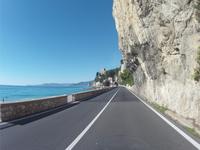 1. Route SS1 on the Ligurian coast
1. Route SS1 on the Ligurian coast
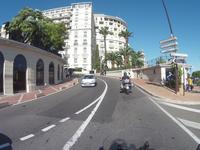 2. Monte Carlo
2. Monte Carlo
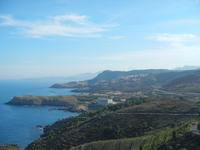 3. The coastal mountain road D914 on the French-Spanish border
3. The coastal mountain road D914 on the French-Spanish border
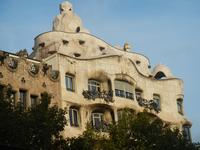 4. Gaudi architecture in Barcelona
4. Gaudi architecture in Barcelona
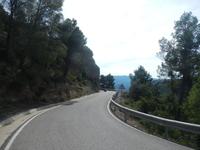 5. Mountain road 7013 in the Serra del Montsant
5. Mountain road 7013 in the Serra del Montsant
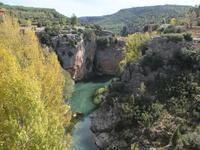 6. Gorge in El Maestrazgo
6. Gorge in El Maestrazgo
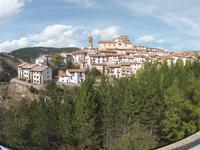 7. Linares de Mora, reachable via the A1701
7. Linares de Mora, reachable via the A1701
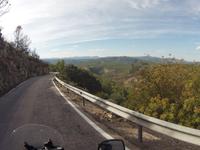 8. Sierra de Javalambre
8. Sierra de Javalambre
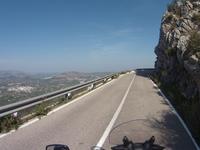 9. On the CV715 to the north of Benidorm
9. On the CV715 to the north of Benidorm
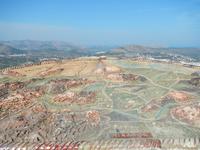 10. View from a lookout on the CV715
10. View from a lookout on the CV715
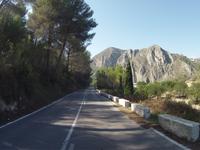 11. On the CV70 to the north of Benidorm
11. On the CV70 to the north of Benidorm
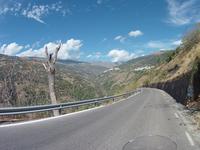 12. The A4132 in the Sierra Nevada
12. The A4132 in the Sierra Nevada
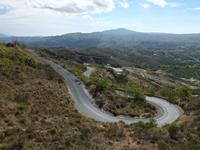 13. View of Sierra Nevada from the Canar road north of Orgiva
13. View of Sierra Nevada from the Canar road north of Orgiva
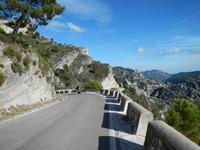 14. Outstanding scenery in the Sierra de Almijara
14. Outstanding scenery in the Sierra de Almijara
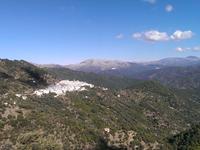 15. Pueblos blancos on the A405 south of Ronda
15. Pueblos blancos on the A405 south of Ronda
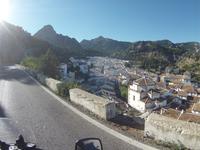 16. Grazalema pueblo from the A372, west of Ronda
16. Grazalema pueblo from the A372, west of Ronda
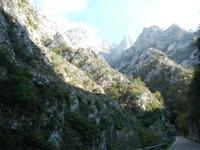 17. Picos de Europa
17. Picos de Europa
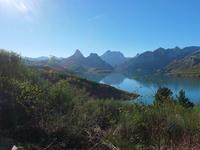 18. Embalse de Riano in the Picos de Europa
18. Embalse de Riano in the Picos de Europa
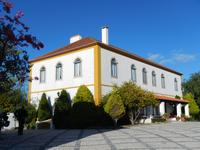 19. Casa D'Obidos, Obidos, Portugal
19. Casa D'Obidos, Obidos, Portugal
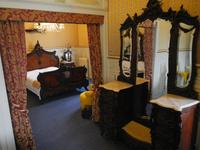 20. The Royal Suite at Castelo Santa Catarina, Porto
20. The Royal Suite at Castelo Santa Catarina, Porto
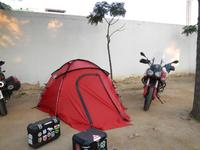 21. Campsite in Roses
21. Campsite in Roses
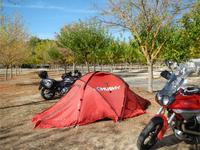 22. Mariola Campsite near Alcoy in the autumn
22. Mariola Campsite near Alcoy in the autumn
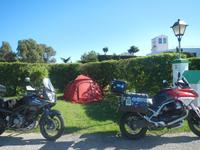 23. Camping Rio Jara, Tarifa
23. Camping Rio Jara, Tarifa
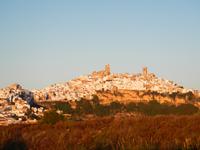 24. Arcos de la Frontera, Andalucia
24. Arcos de la Frontera, Andalucia
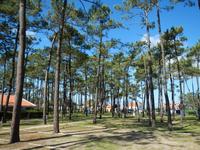 25. Camping Campiferias, Vila Nova de Milfontes, Portugal
25. Camping Campiferias, Vila Nova de Milfontes, Portugal
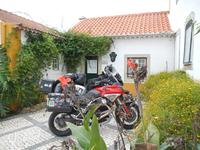 26. Bike parking in front of the cottage at Casa d'Obidos
26. Bike parking in front of the cottage at Casa d'Obidos
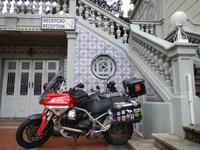 27. Bike parking at Castello Santa Catarina, Porto
27. Bike parking at Castello Santa Catarina, Porto
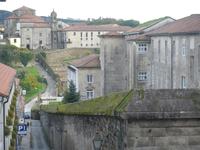 28. Entrance to Hotel Miradoiro de Belvis, Santiago de Compostela
28. Entrance to Hotel Miradoiro de Belvis, Santiago de Compostela
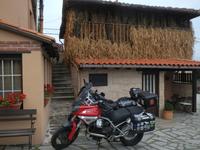 29. Hotel Rural Aguilar, Cudillero, Asturias, Spain
29. Hotel Rural Aguilar, Cudillero, Asturias, Spain
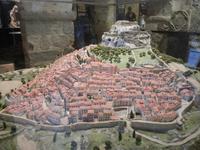 30. A model of Morella in the castle museum
30. A model of Morella in the castle museum
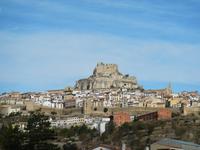 31. Morella - the real thing
31. Morella - the real thing
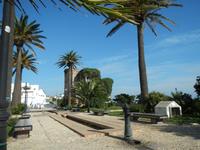 32. Tarifa
32. Tarifa
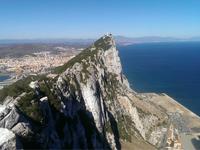 33. Gibraltar from the Rock
33. Gibraltar from the Rock
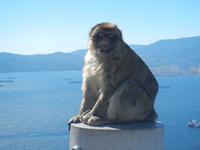 34. Barbary macaque on Gibraltar Rock
34. Barbary macaque on Gibraltar Rock
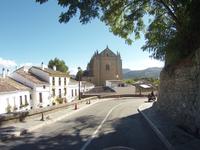 35. Ronda, Andalucia
35. Ronda, Andalucia
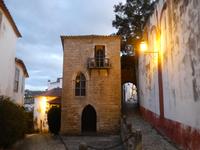 36. Obidos, Portugal
36. Obidos, Portugal
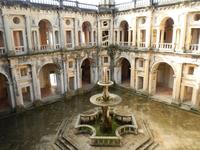 37. Convento do Cristo, Tomar, Portugal
37. Convento do Cristo, Tomar, Portugal
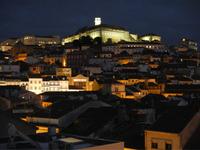 38. Coimbra at dusk
38. Coimbra at dusk
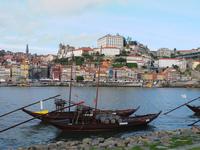 39. Porto from the south bank of the River Douro
39. Porto from the south bank of the River Douro
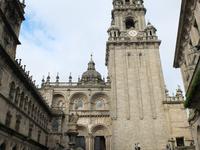 40. Santiago de Compostela
40. Santiago de Compostela
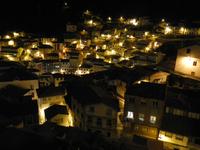 41. Cudillero at night, Asturias, Spain
41. Cudillero at night, Asturias, Spain
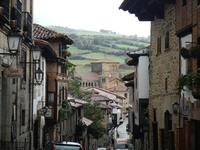 42. Santillana del Mar, Cantabria, Spain
42. Santillana del Mar, Cantabria, Spain
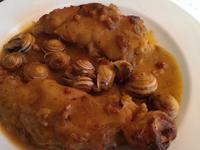 43. Pigs trotters and snails in Barcelona
43. Pigs trotters and snails in Barcelona
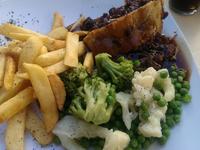 44. Steak pie with chips and veg in Gibraltar
44. Steak pie with chips and veg in Gibraltar
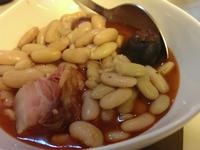 45. Asturian bean stew (fabada) in Cudillero
45. Asturian bean stew (fabada) in Cudillero
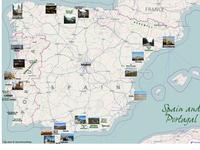 Map
Map